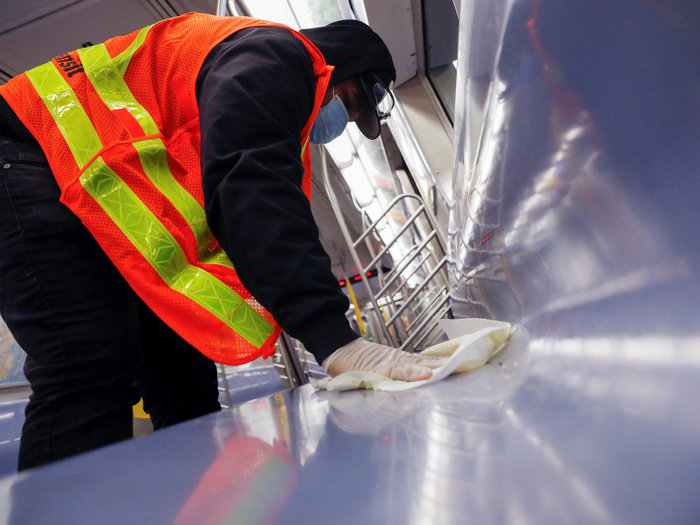CDC Advice On Surface Spread Of COVID-19 ‘Has Not Changed,’ Agency Says
2 min read
The Centers for Disease Control and Prevention is clarifying its guidance to prevent the coronavirus from spreading, hoping to clear up confusion over whether a person can contract the disease by touching surfaces that have the virus on them. The agency said “usability improvements,” including a headline change on its webpage about preventing viral infection, seemed to trigger news stories saying its guidelines have changed.
“Our transmission language has not changed,” CDC spokesman Benjamin Haynes told NPR.
The main source of the coronavirus’s spread, the agency said, is through respiratory droplets from an infected person who coughs, sneezes or talks in close proximity to someone else.
“COVID-19 spreads mainly through close contact from person to person,” Haynes said. “While it may be possible that a person can get COVID-19 by touching a surface or object that has the virus on it and then touching their own mouth, nose or possibly their eyes, this is not thought to be the main way the virus spreads.”
A number of news outlets, including The Washington Post, noted this week that the CDC had reorganized information on its page titled “How COVID-19 Spreads.”
Last month, the page listed “Spread from contact with contaminated surfaces and objects” under its own subheading, just below a similar subhead on “Person-to-person spread.”
The page now lists surfaces and objects in a new subsection titled “The virus does not spread easily in other ways.”
On both the current version of the page and the older one, the CDC says of surface transmission, “This is not thought to be the main way the virus spreads, but we are still learning more about this virus.”
The CDC said people should continue to clean and disinfect dirty surfaces that could be harboring the virus.
“Transmission of SARS-CoV-2 to persons from surfaces contaminated with the virus has not been documented,” the agency says on its page about disinfecting surfaces. But it adds, “Current evidence suggests that SARS-CoV-2 may remain viable for hours to days on surfaces made from a variety of materials.”





